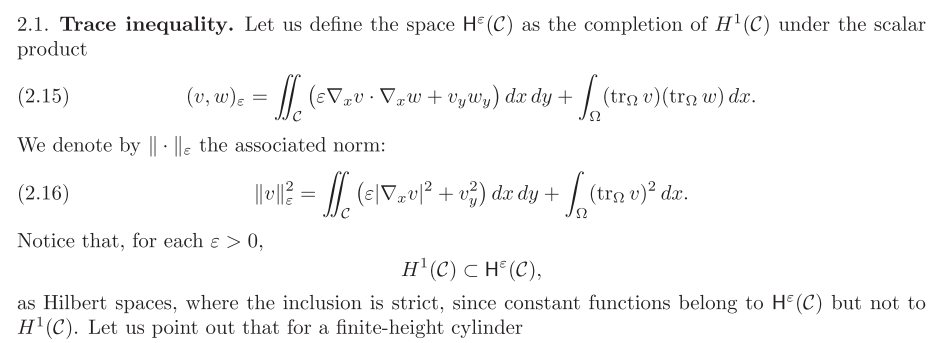Let $\Omega$ be a bounded smooth domain and define $\mathcal{C} = \Omega \times (0,\infty)$. Below, $x$ refers to the variable in $\Omega$ and $y$ to the variable in $(0,\infty)$. The map $\operatorname{tr}_\Omega:H^1(\mathcal C) \to L^2(\Omega)$ refers to the trace operator ($\operatorname{tr}_\Omega u = u(\cdot,0)$ for smooth functions). 
How do I know that the constant functions are in that bigger space (let's just take $\epsilon =1$)? They obviously have finite $H^\epsilon(\mathcal{C})$ norm but that is not enough.
We can approximate (see this) the constant function $1$ by $u_n$, where $u_n(x,y) = 1$for $y \in [0,n)$ and $u_n(x,y) = 0$ for $y \in [2n, \infty)$ and $u_n(x,y)$ linearly interpolates between $(n,2n)$. This is Cauchy with respect to the $H^\epsilon$ norm (edit: it's not Cauchy), but how to prove that $1$ is in $H^\epsilon$? I thought we could say $\lVert u_n - 1 \rVert_{H^\epsilon(\mathcal C)} \to 0$ but this is not sensible since $tr_\Omega$ is only defined for $H^1(\mathcal C)$ functions, and $1$ is not in $H^1(C)$.
